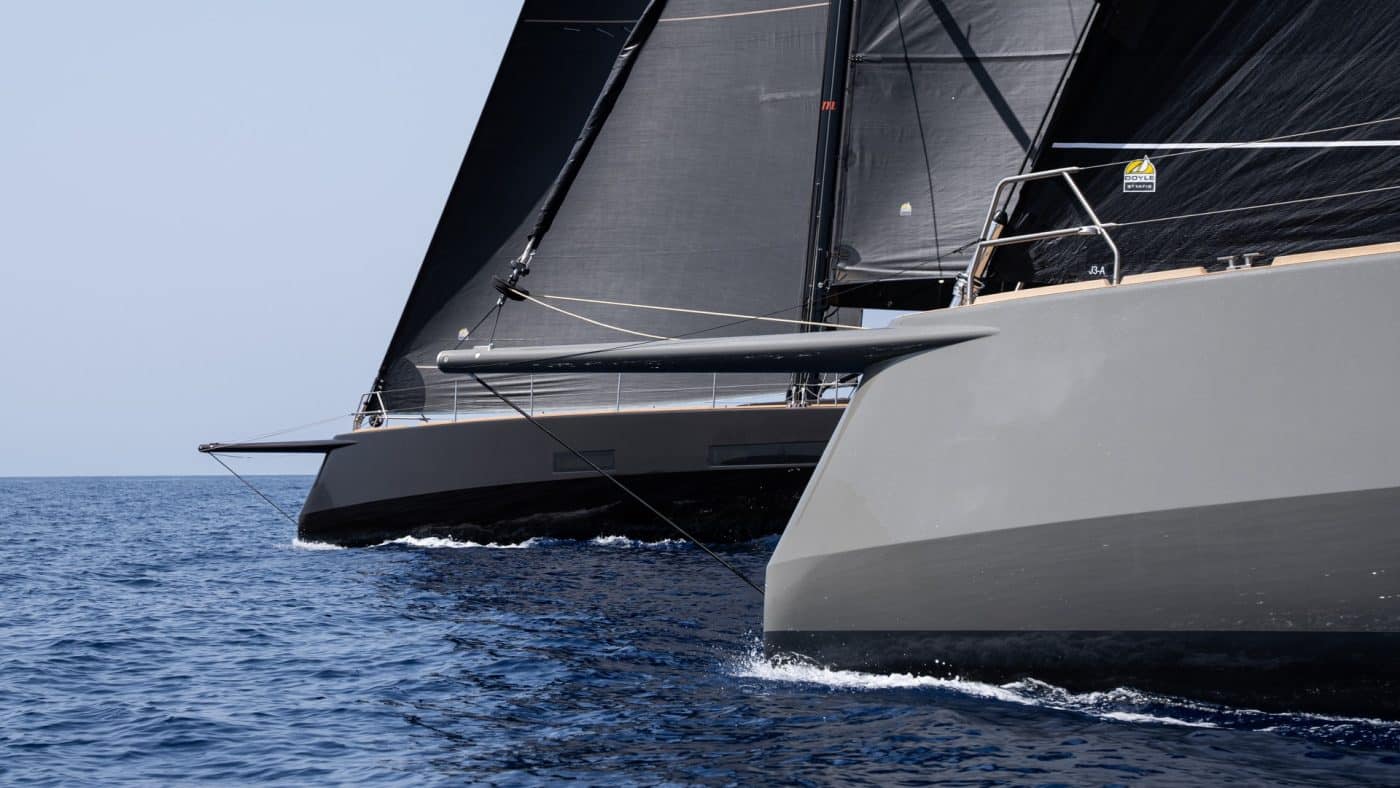
TIDE MAGAZINE: TAKE TWO
10 November 2023
Baltic Yachts created quite a stir when it launched its 68 Café Racer, Pink Gin Verde. Now hull number two, Open Season, is on the water and the devil is in the difference
Every now and again a yacht comes along that makes waves: case in point – the 68’ Café Racer. Hull number one was launched in 2021 and immediately created a stir, only partly down to the fact that it was a 68’ day sailer. We even coined the phrase ‘pocket Superyacht’ to describe it, which has certainly stuck (see The Pocket Superyacht, TIDE, Number Two). Its other big headline-grabbing aspect was that this all-electric powered boat further burnished her green credentials by incorporating sustainable flax laminates in the hull construction. What that means in layman’s terms is that this is a boat that can biodegrade. At present the only thing you can do with a fibreglass boat when its working life is over is chop it up and put it in landfill. The fact that a top-end manufacturer was willing to invest in considerable research and development regarding sustainable construction and was then confident enough to construct such a costly vessel using this new technology was a big statement. The results have been compelling and so hull number one, Pink Gin Verde, has been followed up with hull number two, Open Season, and number three confirmed as we go to print. The boats enjoy the same hull form but there are also significant differences.
First up though, the basic concept. The term Café Racer, for the unfamiliar, refers to a genre of slick, stripped-down motorbike that rockers used back in the 60s to roar along the country roads around London, stopping off at cafés and bars on the way. In yachting terms, Café Racer has usually been applied to day sailers in the 25’-35’ size bracket and points to a genre of yacht that is fast and stylish with minimal accommodation. The 68’ is therefore unusual simply by merit of taking this concept and doing it on a grand scale. The company commissioned Mallorca-based naval architect Javier Jaudenes to draw up the lines, with interior design for hull number one by Design Unlimited. This team had already enjoyed success with designs such as the 108’ cruiser/racer WinWin – a design that incorporated sustainable cork insulation in the hull – a notable sustainable feature taken up with aplomb in Pink Gin Verde. Yet what is also notable with this boat is how few direct rivals there are in the field. The ClubSwan 50’ and 80’ sit either side of this size bracket and require big crews, while yachts such as the ICE 70’ and Advanced 68’ and now Y Yachts 75’ Breeze are much more tailored to longer-range fast cruising.
The ‘unplug and play’ fun weekender concept is, by and large, unique to Baltic in this size bracket
The 68’ presented specific challenges in that it had to be fast and powerful but also easily handled. Weight was therefore kept to a minimum and out of the ends of the boat. In terms of hull form, maximum length is on the waterline thanks to a vertical transom and dreadnought bow. The hull profile is low and purposeful with inverted sheer, while below the waterline the hull features moderate rocker and a deep, T-shaped keel on a very narrow foil. In keeping with many modern designs, the beam is generous and pulled right back to the transom but the waterlines are relatively fine with the hull flaring out, significantly above the waterline to provide extra power when heeled over, while keeping the wetted surface area low in light airs. Styling is sleek and the coachroof is low, wedge-shaped and bedecked with solar panels. The interior is perhaps not as stripped out as the Café Racer moniker suggests and both boats provide room for an owners’ suite, crew quarters, plus a well appointed galley. Significant use of lightweight, cored panels with veneer ensures that weight is kept to a minimum.
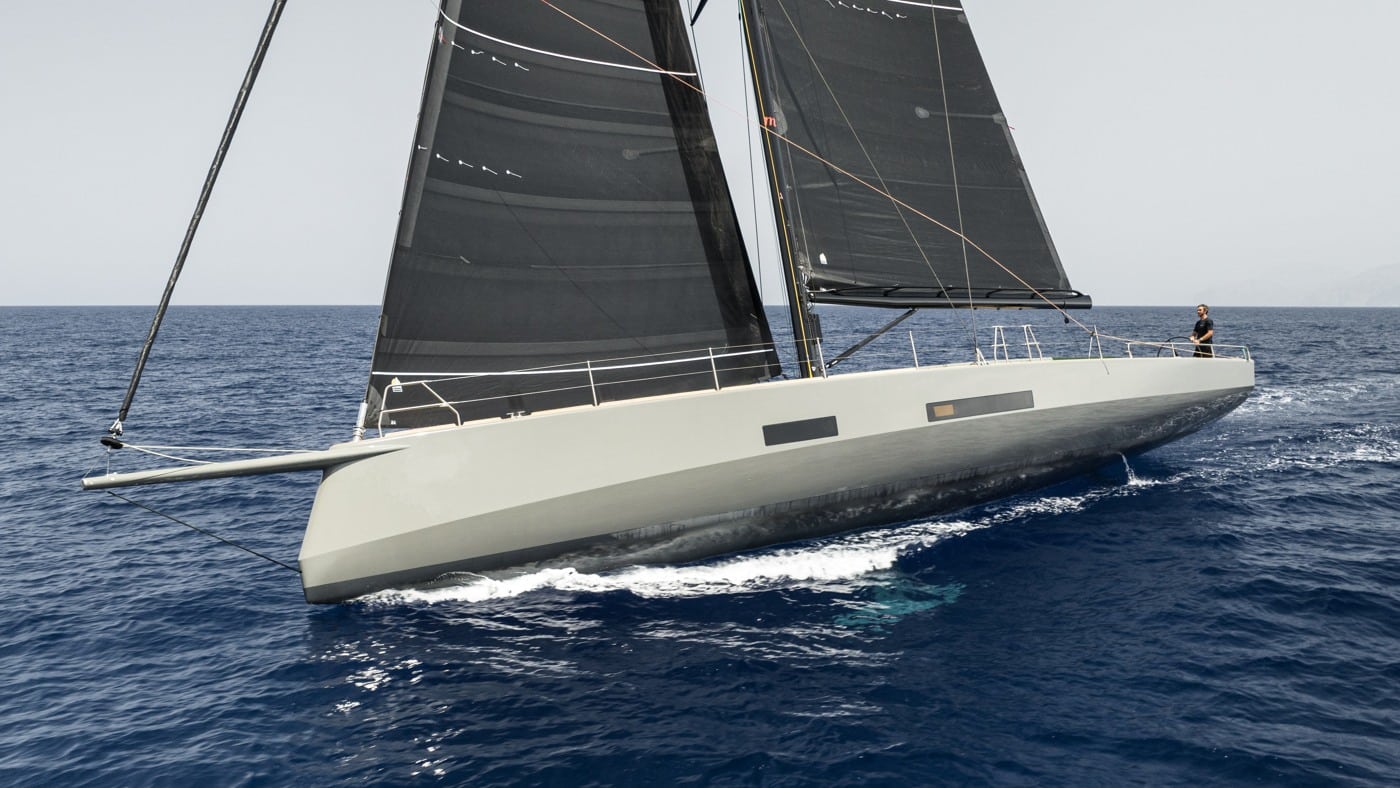
The boat was conceived to perform well in light to moderate breezes and for that, a powerful sail plan was required. One of the significant features of the Café Racer has been the fact that Jaudenes was able to incorporate a big rig without the need for running backstays – the bane of any performance yacht with pretensions of being operated short-handed. To achieve this, Jaudenes turned to the team at Doyle Sails, who have been developing structured luff sails which use the integral construction of the sail luff to provide more strength and support to the rig as a whole. While this concept was initially pioneered for headsail luffs, the technology was then adopted in mainsails too, which provides yet more strength and support for a rig and was one of the key ingredients enabling the designers to eschew checkstays and runners. This was then married with a Marstrom rig which worked on the heavily swept spreader set-up first pioneered by Bergstrom & Ridder in the 80s to provide a completely backstayless rig. All of which makes for effortless tacking and gybing even when short-handed. Runners are, in fact, provided but they are more of an insurance policy for use when the wind gets over 30km or the sea state is very rough.
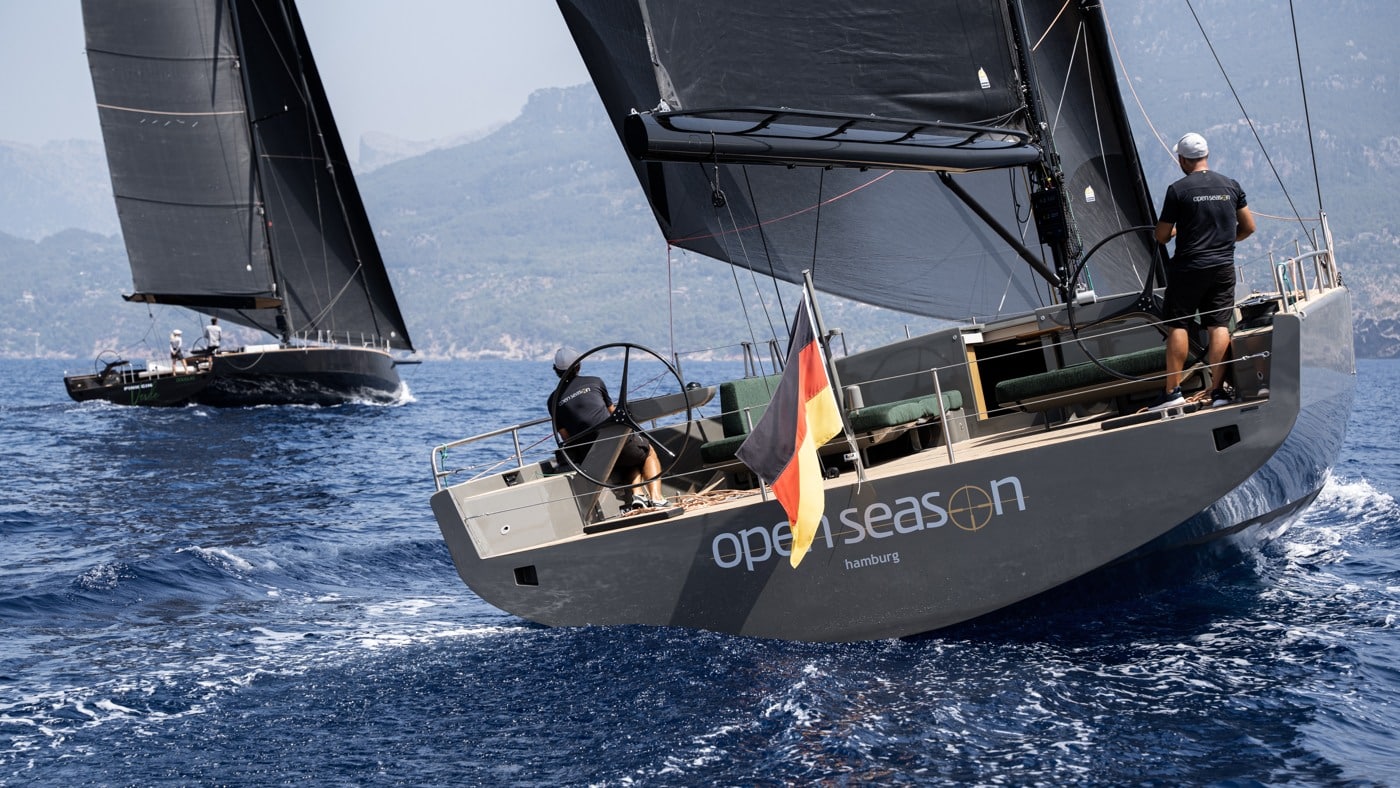
Although Pink Gin Verde and Open Season share the same hull form, there are notable differences between hull number one and two. It is clear that the owner of Open Season, a seasoned racer on the Mediterranean circuit, has a far greater focus on pure performance. As such, the boat has been built in pure carbon with the flax reinforcement dispensed with. The deck is pre-preg Nomex to further keep the weight down. This has made it significantly lighter, with the new boat weighing in at 20,600 tonnes as compared to the 22,800 tonnes of hull number one. Beyond that though, there are other significant changes; the keel has been deepened from 4m to 4.7m to provide extra stiffness and power, while the twin rudder set-up available on the Pink Gin Verde has been eschewed in favour of a deeper single fin. Both boats boast all-electric power but while Pink Gin Verde has twin 15kw Oceanvolt motors, Open Season favours a single unit with a diesel generator incorporated to boost range when required. Both boats feature extensive solar power and hydro regeneration from the free spinning propeller when under sail. Inside, Design Unlimited has been supplanted by Jens Paulus, who has gone for a more minimalist approach than on the previous model.
The new boat has been worked up throughout the summer in order to be race ready, and will be competing in the circuit through the autumn. It will be fascinating to see how she performs – particularly in comparison to Pink Gin Verde. Time to get the cigars out – it’s twins!
As published in TIDE Magazine nr. 6 2023
WORDS. SAMUEL JEFFERSON
IMAGES: ORIOL ESTEVE
MORE ABOUT THE BALTIC 68 CAFÉ RACERS
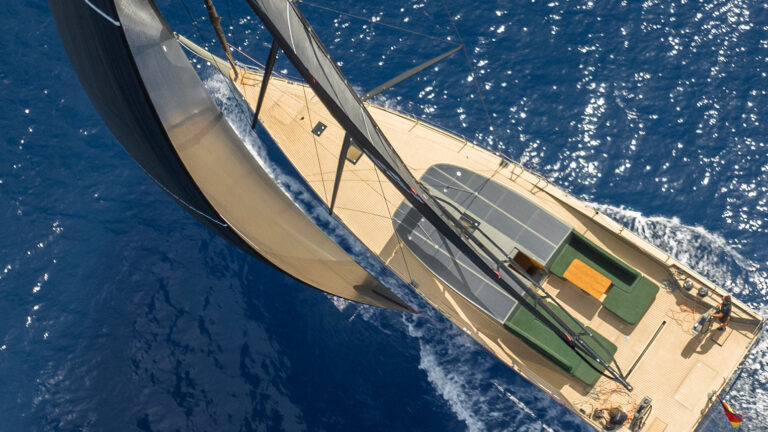
Baltic 68 Café Racer Open Season
Commissioned by an experienced owner who is familiar with the Mediterranean regatta circuit, the second Baltic 68 Café Racer is...
MORE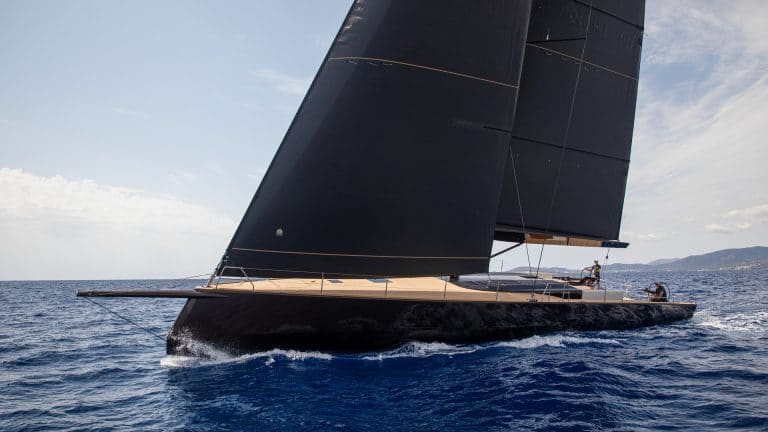
Baltic 68 Café Racer Pink Gin Verde
Designed to deliver an electrifying performance in more ways than one, this easy to handle daysailer is boosted by green...
MORE